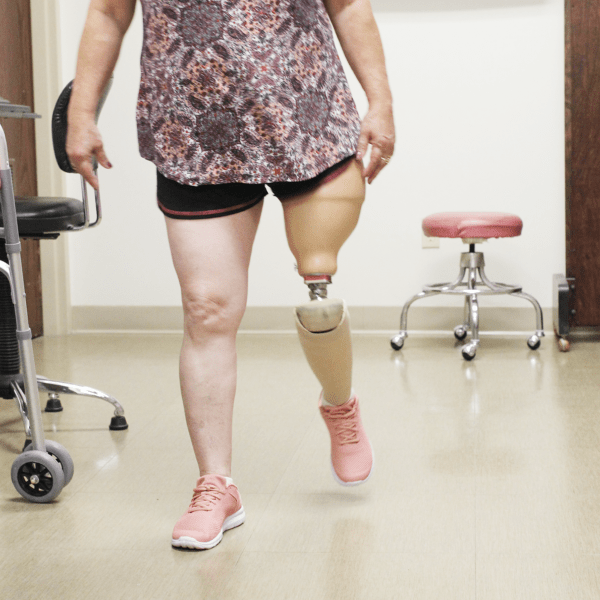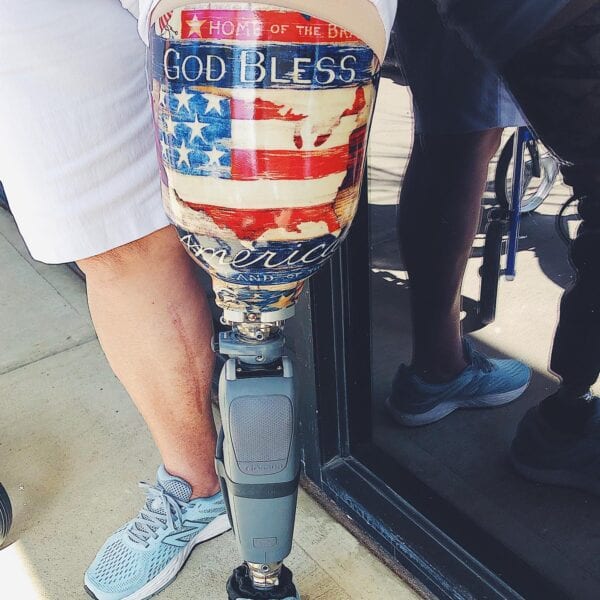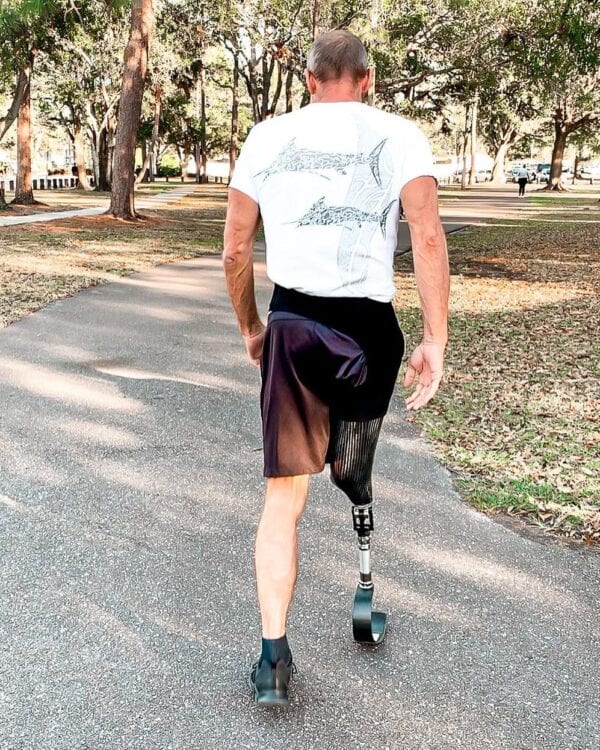LOWER EXTREMITY PROSTHETIC DEVICES
Above Knee / Knee Disarticulation / Below Knee
Depending on the cause, there are different levels of lower extremity amputations. Learn more about these different amputation types below.
Lower extremity amputations have become increasingly more common over the years and the componentry available to compensate for the loss of limb and function has also progressed significantly along with it. Vascular insufficiency is the most common cause of amputation (82%), followed by trauma, cancer, and congenital limb deficiency. Often times, the cause of amputation will dictate which level of amputation is performed.
The socket design is the most important part of the lower extremity prosthesis as this is where the prosthesis interacts with the patient’s remaining/residual limb. The socket must fit properly to ensure the best possible outcome. Our practitioners go to great lengths to ensure our patient’s functional and socket comfort goals are achieved.
Do you have questions about TMR?
Click here to find out how we can help you.
Above Knee
Transfemoral
A transfemoral amputation, or otherwise known as an above-knee amputation, occurs in the thigh, through the femoral bone (femur). While no amputation is easy to adapt to, the transfemoral amputation does offer more challenges than the lower level amputations.
This level of amputation requires more energy when walking with a prosthetic device. A transfemoral prosthesis is more complex because of the addition of a knee joint. There are many systems available for amputees, including conventional and high-tech options.
Hip Disarticulation & Hemipelvectomy
The hip disarticulation amputation involves removing the femur in its entirety, but leaving the pelvis intact. These are one of the least common levels of amputation. The main causes for these types of amputations are trauma and osteosarcoma (cancer).
Since these amputations are not very common, the average prosthetist will only see a handful of patients at these levels in his/her career. Westcoast Brace & Limb prosthetists have worked with many patients at these difficult levels.
Our experience with hip disarticulation and hemipelvectomy patients has allowed us to developed specific techniques. These techniques have resulted in improved comfort, fit and function for these patients.
Ready for the perfect fit? Contact us today so we can get started helping you!




Knee Disarticulation
A knee disarticulation (sometimes called a ‘through knee’) is an amputation that involves keeping the femur intact. However, the tendons and ligaments attaching the femur (thigh bone) to the tibia (shin bone) are detached.
There are several advantages of the knee disarticulation over the traditional transfemoral (above-knee) amputation. The first is, decreased rehabilitation time since there is less trauma to the femur. Secondly, the adductor group of muscles (the muscles that bring the leg towards the body) are still intact. This results in the patient having more control over his/her residual limb. The third advantage is, the end of the femur can take some weight bearing instead of through the ischium (sitting bone).
The length of the residual limb is as long as possible (the entire femur) which equals more control over the prosthesis. This can translate into more stability and a better gait.
Despite the advantages, the knee disarticulation level presents an interesting challenge to the patient and the prosthetist. The end of the femur is larger than the area above it, which means it can be difficult to accommodate this area. Since the femur is fully intact, it can lower the person’s knee center compared to the opposite side and limit componentry options.
Due to these kinds of challenges, few prosthetists, when consulted prior to amputation by a surgeon or patient, will recommend this level over the traditional transfemoral level.
While there are challenges with this level, our prosthetists have many years of experience fitting this unique level of amputation. Contact us to find out more.
Below Knee
Transtibial
A transtibial amputation, is an amputation that occurs between the knee joint and ankle joint. Most patients who receive transtibial amputations are very successful prosthetic wearers. There are numerous socket styles, suspension systems, foot options, and designs available for transtibial amputees. The patient’s prosthetist will work closely with the patient to determine goals and activity levels and to create the appropriate prosthetic system.
Other Below Knee Amputations
Transmetatarsal
The transmetatarsal amputation is more involved than a simple toe amputation. This type of amputation can sometimes cause one to lose all five toes. However, in most cases a simple shoe/toe filler can help relieve any problems with gait. In instances where future sores or infections are not a concern, one may also be a candidate for a high realism silicone partial foot prosthesis.
Chopart / Symes / Lisfranc
A chopart or symes amputation is performed at the ankle joint. Similar to the knee disarticulation amputation, there are advantages associated with the longer lever arm and distal end weight bearing capabilities. However, there can also be disadvantages in componentry selection, often limiting the types of prosthetic feet and can create an acquired leg length discrepancy as well.
Ready to begin your WCBL journey? We’re ready to help you today!
Email us or Call (888) 552-2555.



